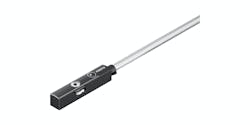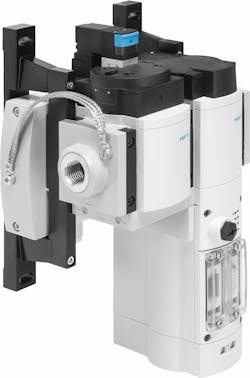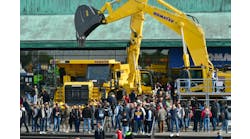Pneumatics continue to offer a range of benefits in various applications. However, as OEMs and their end use customers look to automate more tasks as well as reduce their energy consumption, they are looking for efficient and intelligent solutions.
Power & Motion spoke with Frank Langro, Director - Product Market Management, Pneumatic Automation at Festo North America, about the trends the company currently sees related to pneumatic components and systems, and what developments will be needed to ensure the longevity of this fluid power technology.
*Editor's Note: Questions and responses have been edited for clarity.
Power & Motion (P&M): What trends or market factors do you feel had the largest impacts on pneumatic component and system designs in 2023? Please explain what those trends are and how specifically they impacted the design of pneumatics.
Frank Langro (FL): We are still seeing the effects of the COVID-19 pandemic ripple through the manufacturing landscape. The pandemic accelerated trends that have been occurring for some time. The shortage of skilled workers became even more critical as reshoring efforts gained traction and manufacturers tried to stabilize their supply of products to customers.
What this means for industrial products and pneumatics is that products need to be easy to install and use, and they must offer efficiency to manufacturers.
P&M: What are some of the key features or performance attributes your company is working to include with its pneumatic components and systems, or for which customers are asking?
FL: When designing a product, Festo always considers how design improvements can make our customers more efficient. This approach considers the perspectives of both the OEM and the end user.
For example, the Festo SDBT-MSX cylinder switch is self-teaching, meaning that a precise placement of the switch with power on is no longer needed. From the OEM perspective, this cuts down on installation time significantly. This cylinder switch is also programmable and can be configured as PNP or NPN, giving the ultimate flexibility to an end user and lowering the number of spare parts required for inventory.
P&M: Are you seeing a greater integration of electronics with pneumatics? If so, what are some examples you can share and the benefits of doing so?
FL: The integration of electronics and pneumatics has been ongoing since Festo introduced the first bus-enabled valve manifolds back in the 1980s. This trend continues as it brings greater intelligence into products and improves the efficiency of machines. Electronics often enhance troubleshooting, giving users the ability to pinpoint failures quickly.
Today the information coming from devices is used to not only detect failures but also predict them. The Festo series of energy efficiency modules MSE6 was developed with the focus on reducing compressed air leakage by monitoring the flow and pressure profile. When a machine idle state is detected, operators can set the MSE6 unit to automatically regulate air down to a preset lower level or to 0 if desired and save energy.
Additionally, the pressure, flow, and air consumption data can be captured, stored, and analyzed to give the company insights into ongoing energy consumption.
P&M: Do you foresee any new trends or market factors impacting pneumatic designs in the coming year or years? If so, what are those and what impact will they have?
FL: One of the trends concerns improvements in force control. For example, Festo has further developed the use of piezo electric technology as an alternative to the long standing use of solenoid pilot valves. Piezo technology enables precise control in processes such as wafer polishing and battery winding. Improvements to these processes reduce waste and are vital as the demand for semiconductors and rechargeable Li-ion (lithium-ion) continues to rise.
Piezo pilot valves use up to 95% less energy than a typical solenoid valve due to the capacitive nature of the piezo ceramic element. Lower energy consumption supports the goal of lowering the carbon footprint of the enterprise.
READ MORE: Pneumatics in the Lab
P&M: Are there any economic/market factors you are concerned could negatively impact the pneumatics industry in the coming year?
FL: It is expected that the automation market will continue to expand. The demand for goods is rising at the same time as re-shoring and skilled labor shortages put pressure on manufacturers. The only solution is more automation.
The challenge for pneumatics is the trend towards “electrification” of motion, which drives down the cost of servo motion and saves energy by reducing demand for compressed air systems. This is where new low power consuming and intelligent pneumatic devices can bring benefits and continue to make pneumatics a viable solution.




